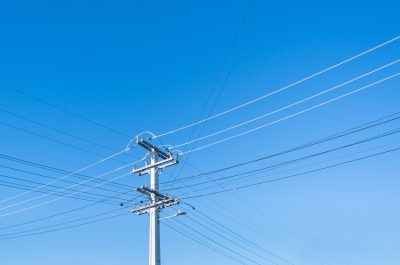Two sides to the energy market?
The Energy Security Board is looking at where our energy system will be post-2025, with a critical component considering moving toward a more two-sided market.
The benefits to consumers of two-sided markets depend on several factors, and any transition should only happen when there is a clear net benefit to consumers.
With COVID-19 crushing installation rates of distributed energy resources (DER) such as solar and batteries, this will impact the sums in the short term.
What are two-sided markets?
A two-sided market is basically a technical term for a market with more visibility over energy demand and more capacity for consumers to be involved.
Currently, the electricity system hinges on a wholesale market where the main buyers are retailers.
The involvement of small consumers, such as households, is via feed-in tariffs they may receive for their excess solar and the electricity they purchase from retailers.
Participation in demand response is mostly limited to large customers. Small residential customers are mainly involved via media campaigns warning of power shortages.
In a two-sided market, individual households could respond to price signals to export solar, import electricity to charge batteries or lower their usage.
Why are they good?
Giving consumers more visibility, options and control over their consumption and cost of electricity is good.
Price signals that encourage customers with DER to export at times of peak demand and charge devices (e.g. batteries or EVs) when demand is low could help support the grid. This signal is fairer to customers who do not have DER but who share the cost of managing its impact on the system.
The ability for a larger pool of participation in demand and frequency response could help reduce unnecessary spending on infrastructure.
For networks, having greater visibility of what’s going on behind meters could also help planning to manage current and future network constraints.
Moving to two-sided markets – protecting the customer
The Energy Security Board released a consultation paper outlining the benefits of two-sided markets, including highlighting potential benefits for end-users, and distribution network operation. While these potential benefits are rightly explored and require further analysis, equally important are the potential costs imposed on consumers to achieve these benefits. The lack of consideration of costs in the paper is a significant concern.
The current rules framework drives distribution network service providers (DNSPs) to structure their operations in an efficient way to reduce costs and deliver better value services for consumers. Changes to existing market operating models will need to be supported by rigorous and comprehensive cost-benefit analysis that indicates net benefits for consumers.
Energy Networks Australia therefore strongly supports rigorous and comprehensive cost-benefit analysis, which incorporates empirical assessments of consumer preferences, being undertaken at key decision gateways as the framework is further progressed. The importance of planning for a potential introduction of a two-sided market is recognised but in order to generate value for consumers, material investment should not be undertaken until credible assessments that benefits exceed costs. In addition, the introduction of a two-sided market needs to be balanced against the cost and benefits of any alternative approaches, such as those gained from refining the current market design.
Customers’ primary desire is for safe, reliable electricity supply at an affordable price, and any changes should seek to improve this.
Cost-benefit for consumers
The two-sided market proposal would likely be dependent on the creation of distribution markets. The establishment of distribution markets was explored in the Open Energy Networks (OpEN) project. The project assessed whether distribution markets would offer net benefits to all consumers and developed four different frameworks to explore some of the options for the roles and responsibilities needed to operate a distribution market.
The cost-benefit analysis of the four potential distribution market frameworks assessed during the OpEN work program indicated that net benefits were significantly dependent on continued high deployment rates of DER. Net benefits of $2-3 billion would be available if DER was deployed at the rates envisaged in AEMO’s step change scenario.
Critically, however, net costs to consumers of $1 billion would result if deployment rates of DER matched the central scenario. Further, benefits were not delivered until 2039, while the bulk of the costs were incurred in the next few years.
Alternatives to a distribution market
DNSPs are actively exploring new approaches to facilitate greater integration and utilisation of DER.
Regardless of exactly what evolves in the distribution market space, OpEN recommends a strong focus on improving the visibility of DER and developing and communicating “operating envelopes” that DER needs to safely and efficiently operate within.
Key take-home points for two-sided markets
Energy Networks Australia supports rigorous and comprehensive cost-benefit analysis of the two-sided market framework being undertaken at key decision gateways to ensure a net benefit for consumers.
Non-distribution market approaches to integrating DER are likely to be scalable and more cost-effective in the near term, and DNSPs are already implementing these approaches, reducing risk to consumers, providing flexibility and supporting innovative business models.
The complexity of adding new roles and activities into the consumer protection framework should not be underestimated, to ensure that consumers have choice, are well informed, and the necessary protections are in place.
Energy Networks Australia supports extensive consultation with government, industry and consumers being undertaken to deliver a framework that is in the best interests of consumers.
We don’t want a new system that leaves many customers worse off.


